
Rob had some fun writing this review. His comments are all tongue-in-cheek – as was my later response.
Since this was Rob’s first – and probably his last – effort at writing a review, I thought that it should not fade into obscurity, and live here for the amusement and enjoyment of all…..

Hi
all,
At the end of August, a mysterious parcel turned up in
my office. As you can tell from the A4 in the background….
They’re HUGE!

Ok
– maybe that’s the wrong background… here they are
again… actually a very reasonable size.

A
close-up of the spearpoint knife:
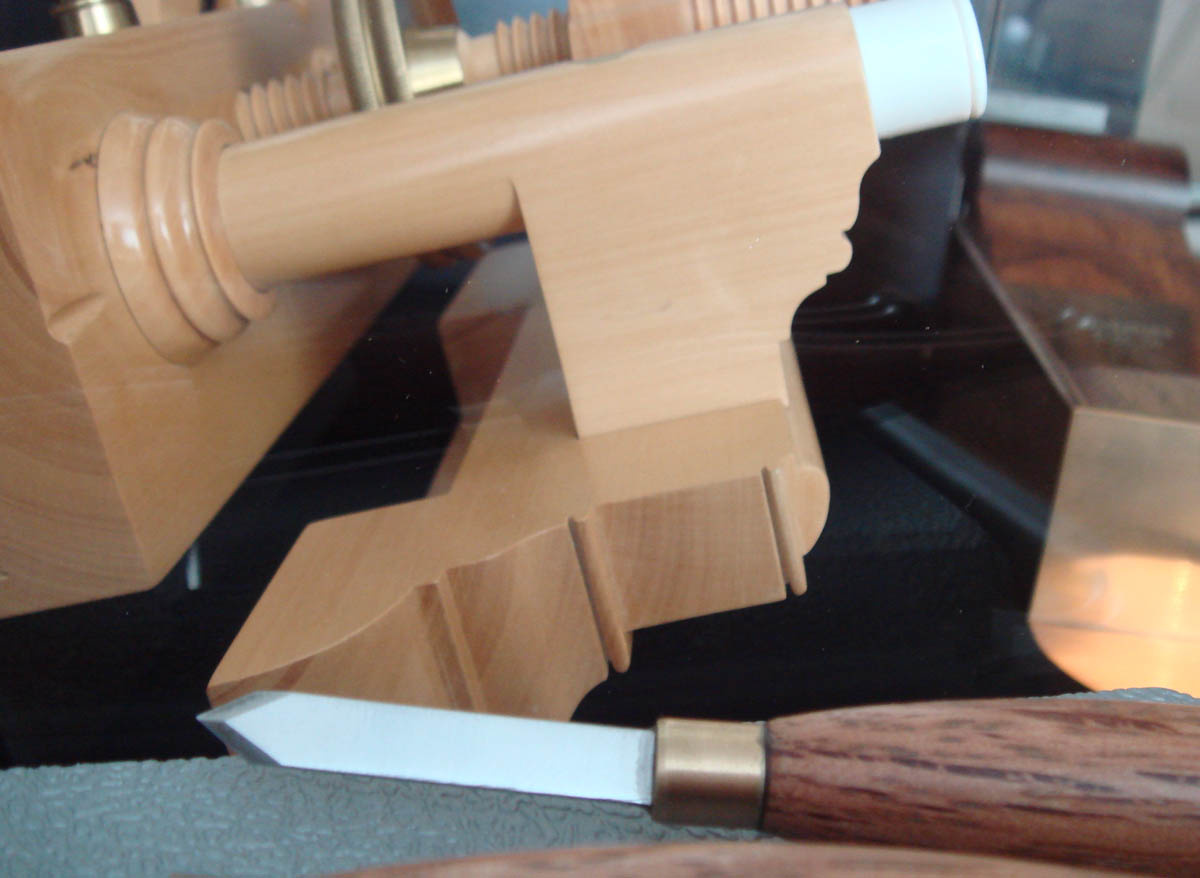
And
the awl:

Physical
Description
Both handles were
beautifully turned from what turns out be, after extensive analysis,
wood. ( Specifically, Allocasuarina fraseriana.)
Each has what
appears to be a hand-rubbed satin finish, and the handles are smooth
without being slippery. Major handle diameters are .652”
(1.66cm), and handles have an overall length of 5.285”
(13.42cm). Each is capped with a .312” (.79cm) ferrule. We were
unable to determine whether blue brass, or white brass was used.
The knife blade measures 1.375” (3.49cm) long, is .225”
wide (.57cm) and is .038” (.20cm) thick. Using an optical
comparator, it was found to have an included angle of 60 degrees
(optional angles were not supplied).
The awl tip is 1.221”
(3.1cm) long, with a root diameter of .152” (.38cm). The tip
tapers to a point over half of the length of the blade.
When
examined under a microscope – both were just as sharp and
pointy up close, as far away.
In
Use
Both precision
instruments were tested in the highest quality hard and softwood
samples we could get our hand on… Pinus strobus, and Acer E
Guitarensis. (commonly known as Eastern White Pine, and “Rock”
maple….)
Softwood results for both knife and awl are
shown below. Lines were carefully scribed at 15 degree increments to
a given axis, to test cut ability across and along the grain. While
both did an excellent job marking in softwood, fiber tearing is
visible in the lines left by the awl.
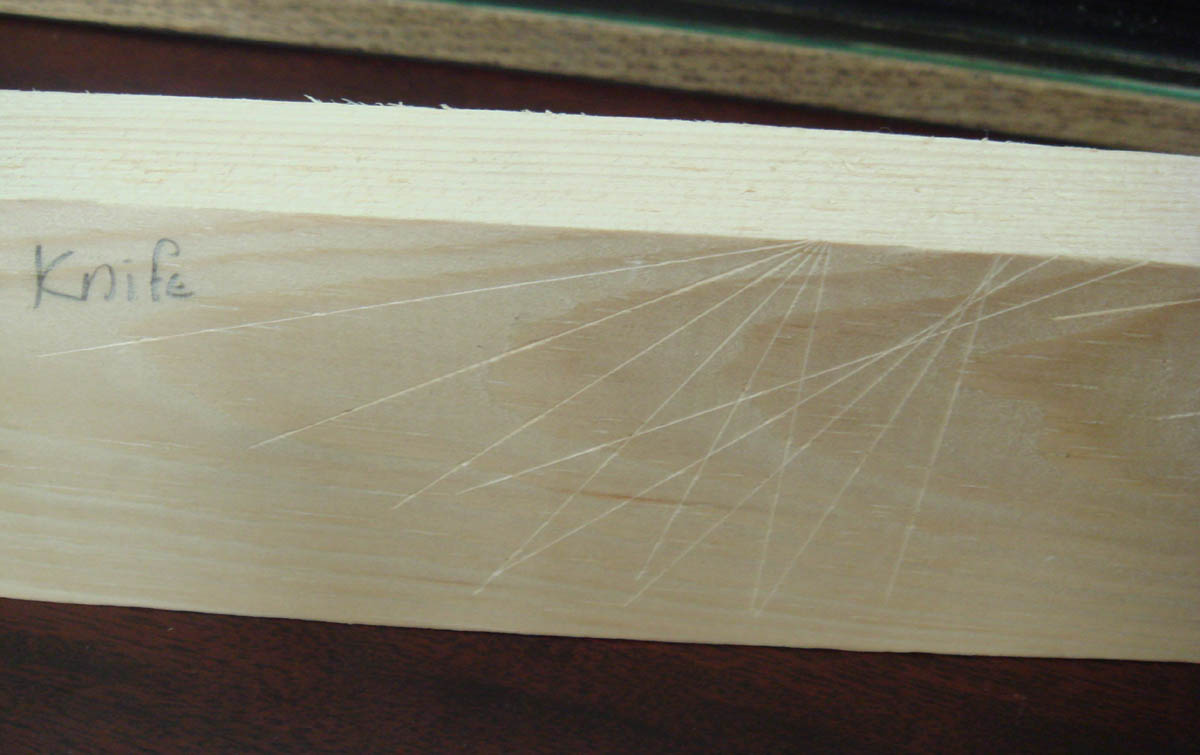

Hardwood
results were much closer – as can be seen in the test pieces
below. Both left clean marks, though again, the awl did have a slight
tendency to follow the grain in some instances.


One
can only conclude from these tests that the marking knife is the best
choice for use as a marking knife… unless of course, you don’t
have one – in which case you’re clearly faced with a
choice of awl or none.
For dovetail work, the knife proved to
be an excellent companion to the revolutionary Veritas dovetail saw
prototype during testing, the results of which can almost be seen
below…
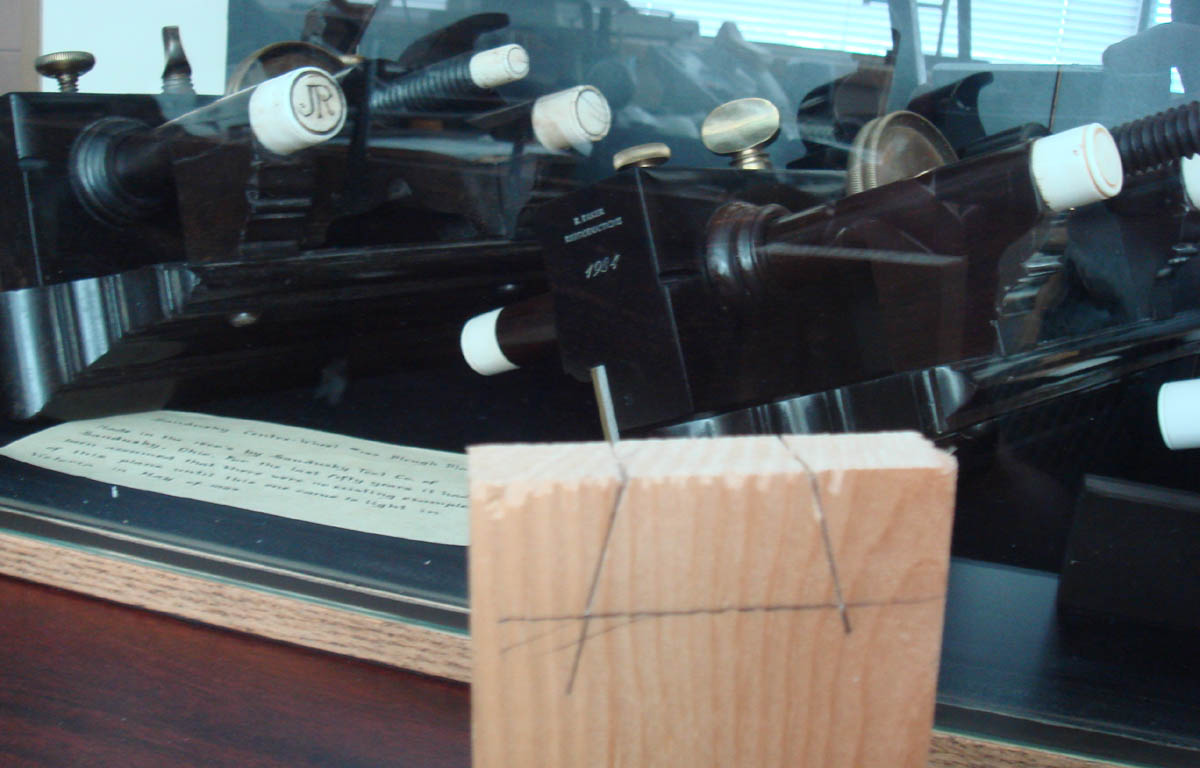
Other
comments
When left on the
bench – both exhibited a tendency to roll in a clock-wise
direction (contrary to the counter-clockwise stated in the
instructions???). The small knob on the end of the handle made them
comfortable to hold in your mouth, while fiddling about aligning pin
board to tail board. The differing finish on the ferrules (one brass,
one nickel plate) made it a snap to tell which was which, just by
looking at them…. Something we wish more manufacturers would
do. [Comment from DC: the “nickel”
ferrule was not deliberate but the result of polishing with a
deburring wheel that had nickel residue! My aging eyesight failed to
pick this up before sending it off to Rob …I am mortified]
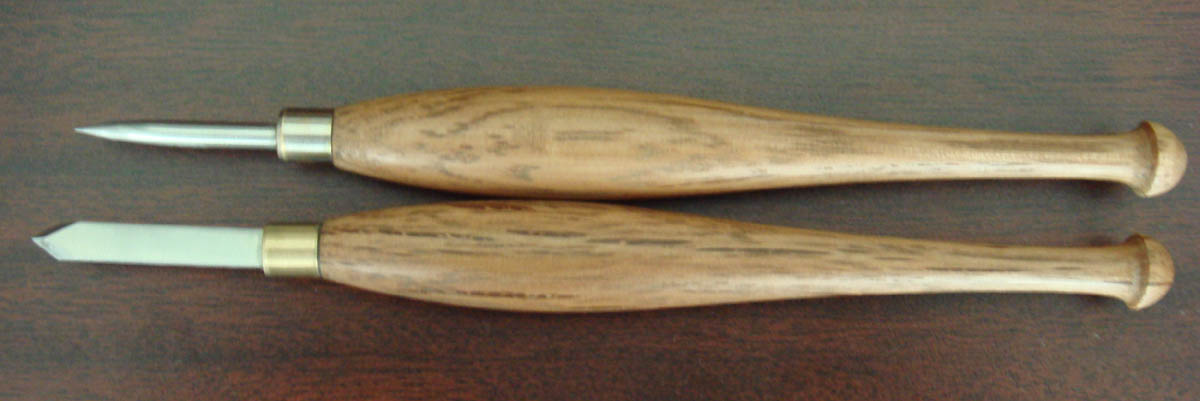
So
there you have it – my first official review, in what I am sure
will be a very short career as a reviewer….
Cheers –
Rob
PS –
Ok – what I really meant to write is that these are beautifully
made, and very useful tools. The handles in particular are superb –
my hand grips the thinnest part of the handle at the web between my
thumb and forefinger, while the balance of the handle mimics the
natural curve of my fingers when relaxed. These are well thought out
tools, and it’s a privilege to have them. Many thanks to Derek!
…. and my response ….
Hi
Rob
My first reaction when I received your email this morning
alerting me to your review was “Oh my Gawd!”. As I was to
discover, my fears were completed well founded.
All I can say
is thank goodness for the distraction of the new range of Veritas
tools. The new H.O.L.T.E.Y. block plane makes a splendid backdrop,
and the new J.M. plough highlights the tones of the She-oak.
I
did omit to mention in the 22-page manual that the marking knife was
designed for bevel up use and best held at 77°. The scratch awl
is more forgiving – may be used either BU or BD, and is
actually the left-handed version.
Since completion of this
pre-production model, I have not only added another 13 pages of
notes, but also accessories for the knife and awl combination.
The
first accessory is a fence for the marking knife. This is to aid
those who find it difficult to mark a straight line, or who have
sniffed a little too much buffing oil the night before.
The
second accessory is a guide for the scratch awl. This one is to
assist the compulsives amongst us resist their insistence on marking
straight lines. 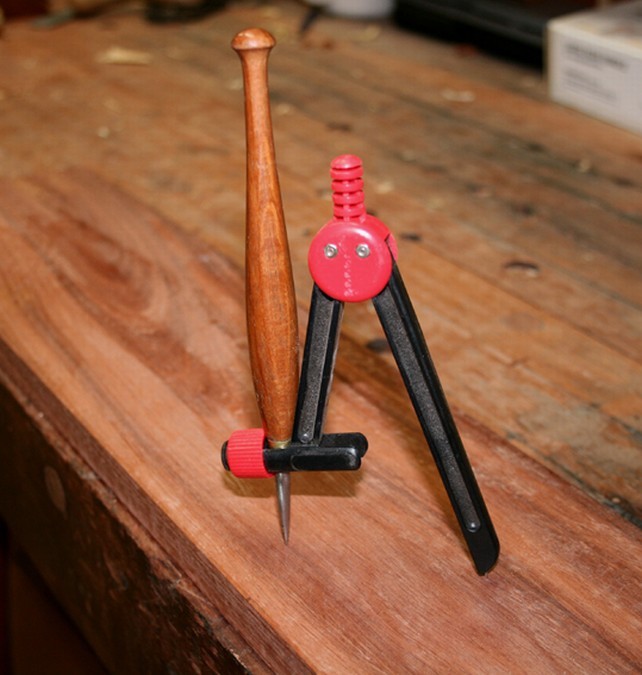
And
here is the full set on offer ..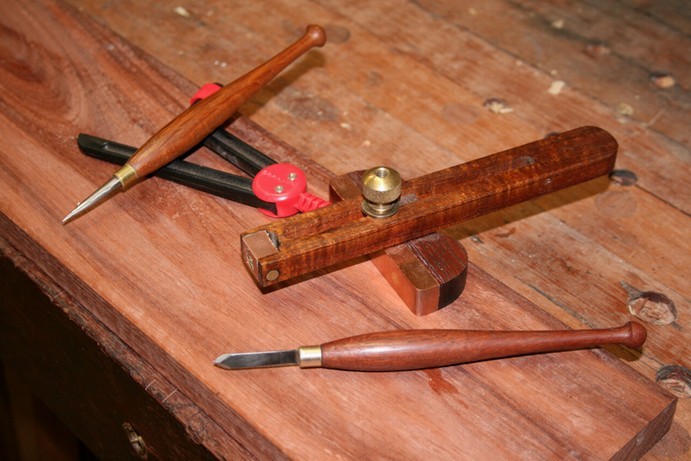
For
those reading this review of the review, and are inspired to send me
money for a set, please be aware that they are only intended to be
released in the Spring of never. I make them mainly as gifts and
occasionally have some over for sale. Alternately, I can send you a
kit comprised a block of wood and an unground HSS jigsaw blade. A
lathe is optional but recommended. Instructions are at
http://www.inthewoodshop.com/ShopMad...Dovetails.html
Thanks
Rob for making my day!
Regards from Perth
Derek